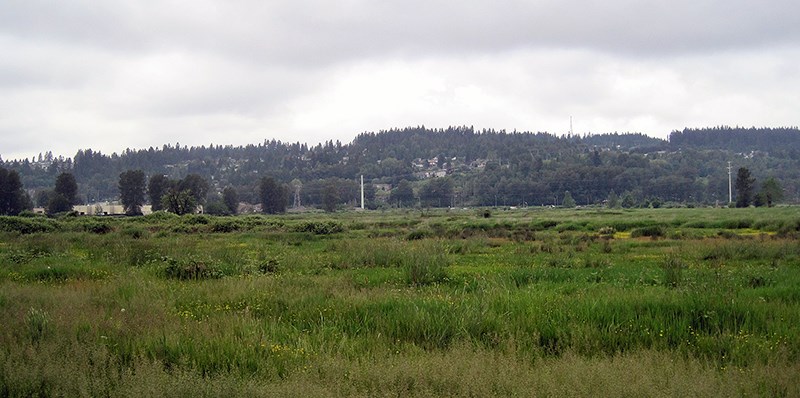With little fanfare, the National Energy Board (NEB) initiated its controversial hearings in Burnaby this week regarding the proposed Trans Mountain pipeline project, which would triple Trans Mountain’s capacity to transport diluted bitumen to the Lower Mainland for export purposes.
These NEB hearings offer the people and groups approved as intervenors an opportunity for a final 40-minute oral summary of the reasons they support or do not support this pipeline project.
Originally, more than 400 people were approved for intervenor status but fewer than a quarter have continued to participate. Many have withdrawn, claiming the process had become so restricted and convoluted that it had become pointless.
The hearings are being held in Burnaby this week and next but the public is not allowed to attend.
When the Enbridge hearings were held in Vancouver, the NEB also did not permit public attendance but, alternatively, provided a live broadcast of the hearings for members of the public at a hotel some distance from where the hearing was taking place to diminish the risk of public disturbances. This time, no public broadcasts in a central location will be provided. Instead, anyone who is interested must view the proceedings on their computers via a live link on the NEB website. Intervenors are allowed to have only two people present at the hearing.
This final step of the hearing process has been rendered even more meaningless by a prohibition on cross examinations or calling witnesses to testify. These rules remain in place as a legacy of the Stephen Harper Conservative government, which introduced a number of new rules to weaken these hearings. If the purpose of an environmental assessment is to bring forward relevant information that allows a project to be thoroughly assessed, then this hearing process is fundamentally flawed.
Throughout the hearing, intervenors had two main opportunities to submit questions, called “information requests,” in writing to Trans Mountain. Trans Mountain responded in writing; then, there was an additional opportunity to ask for clarifications. All the correspondence between intervenors and Trans Mountain is part of the voluminous evidence posted and available to the public on the NEB website.
One of the intervenors is BC Nature in partnership with Nature Canada. Because the Burke Mountain Naturalists are a member of BC Nature, I followed its participation in the hearing process with particular interest. With help of lawyers and experts, BC Nature has focussed mainly on potential impacts to marine birds from the risk of diluted bitumen spills. It also submitted questions about the proposed pipeline crossings of several parks and protected areas.
To my dismay, the answers BC Nature received to these questions were vague, evasive and, in at least one instance, totally wrong.
One of the first questions requested by BC Nature was a description of the lands and age of the forests in the protected areas that would be disturbed by pipeline construction. The reply that came back from Trans Mountain regarding Colony Farm Regional Park in Coquitlam was astonishingly wrong and ill-informed. The vegetation at this park was described by Trans Mountain as a coastal western hemlock forest. Keep in mind that when Colony Farm was purchased from farmers by the provincial government in 1905, it had already been cleared, diked and converted into agricultural fields. It has not been forested for well over 120 years.
How did Trans Mountain staff manage to come up with such a ridiculous answer? Needless to say, upon receiving such a dumbfounding response, BC Nature lawyers asked for clarification. The answer that came back from Trans Mountain was a lie.
Its response was that it did not have permission to enter the park to determine the current state of its vegetation. As Colony Farm is a park and open to the public, it’s hard to imagine it would be difficult for Trans Mountain to go to the park and have a look. Even a quick glimpse from Lougheed Highway would ascertain the absence of a hemlock forest.
It was, however, Trans Mountain’s next statement that destroyed my confidence in the veracity of any of its responses. It went on to claim its statement regarding the forested nature of Colony Farm Regional Park was based on information obtained by aerial surveillance!
Since the Wright brothers did not succeed in achieving powered flight until 1903, there are clearly no aerial surveillance maps that show Colony Farm Park to be a hemlock forest. This response appears to have been simply concocted as an excuse to justify Trans Mountain’s first mistake in claiming the park was forested.
If staff at Trans Mountain were willing to tell this lie, how many others could they also have committed when answering the hundreds of questions submitted by Intervenors?
My faith in the power of this hearing process to obtain accurate information has vanished. To my mind, it has become more of a hoax than a hearing.
--Elaine Golds is a Port Moody environmentalist who is conservation/education chair of the Burke Mountain Naturalists and member of the boards of the Colony Farm Park Association and the Port Moody Ecological Society.



